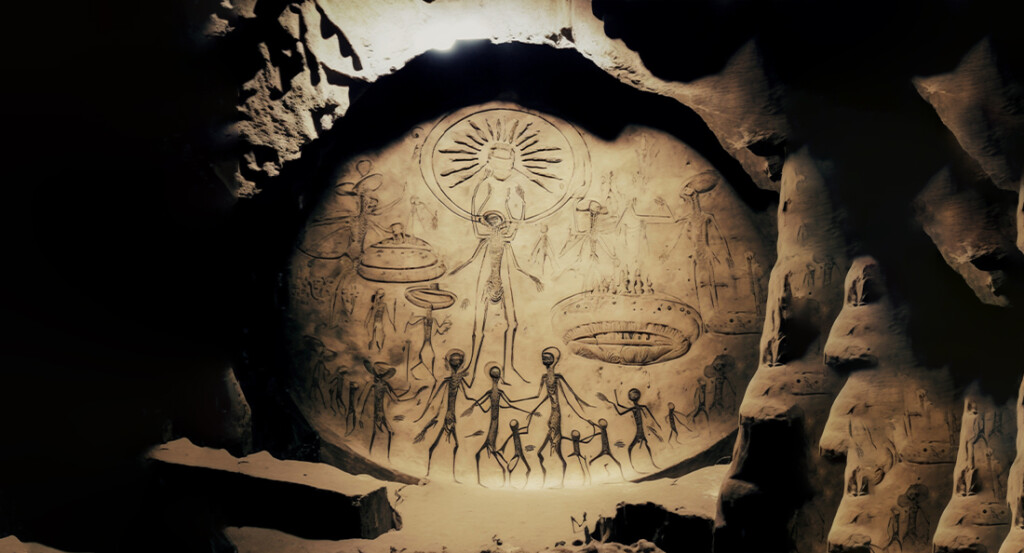The Wheels of Life and Rebirth: Understanding the Significance of Karma, Dharma, and Samskara
(Based on the live discourse of Param Dwij)
(परम द्विज के प्रवचन पर आधारित)

The rich and complex philosophy and spirituality of Hinduism are grounded in three fundamental concepts that play a significant role in designing one’s life, actions, and ultimate destiny: merging into the Supreme Consciousness and getting rid of the cycle of rebirth. They are Karma, Dharma, and Samskara, offering profound insights into the nature of existence, morality, and the path to spiritual liberation. Karma is the law of cause and effect, which controls all deeds and their repercussions in this life and the next. In fact, a deed committed in a previous life or birth will have an effect on the current life. Dharma encompasses one’s moral duty and responsibility to oneself, to others, and to the universe as a whole. At the same time, Samskara refers to the impressions left on the mind by past experiences, which shape one’s character and determine the course of future rebirths. Together, these three concepts provide a robust framework for understanding the human condition and the ultimate goal of spiritual realisation.
The concepts of Karma, Dharma, and Samskara play a vital role in understanding the spiritual path to Nirvana—Moksha—liberation, the ultimate state of freedom from the cycle of birth and death, known as Samsara. These three fundamental pillars provide a framework for living a virtuous life, dealing with the consequences of one’s actions, and ultimately transcending the cycle of rebirth to achieve the highest spiritual realisation, merging into Brahm and achieving Nirvana.
1. Karma: The Law of Cause and Consequences

Karma embodies the idea that every action has a consequence, summarised as the law of cause and effect. According to the doctrine of Karma, every action, whether virtuous or malevolent, will inevitably produce a corresponding outcome. These consequences may not be immediately apparent, but they can have far-reaching effects across multiple lifetimes. The principle of Karma operates on the foundation of balance and fairness, meaning that good deeds lead to positive consequences, while bad deeds lead to suffering. The concept of Karma reminds us that our actions significantly impact human lives and the world around us and encourages us to strive for goodness and positivity in all that we do.
Karma can be divided into three main types. Firstly, there is Sanchita Karma, which refers to the accumulated karma from past lives. Secondly, there is Prarabdha Karma, the karma from past lives currently influencing the present life. Finally, there is Agami Karma, which refers to the karma created in the present, affecting future lives.
The emphasis on personal responsibility and accountability for one’s actions placed by the law of Karma inspires people to behave morally and in harmony with the cosmos. By doing so, people can create positive karma, leading to a better present and future life. On the other hand, negative actions will result in negative karma, which will have consequences in the present or future. Therefore, it is essential to be mindful of one’s actions and strive to act in a way that benefits oneself and others.
In order to achieve Nirvana, a person needs to focus on building Sukarma, which is positive karma, and paying off negative karmic debts through righteous actions, self-awareness, and spiritual practices like meditation, gratitude, and prayer. These practices help people align their actions with universal harmony, leading to spiritual growth.
2. Dharma – The Moral and Ethical Pathway

Dharma refers to the order and customs that sustain life and the universe, characterised by the appropriate behaviours necessary for maintaining this order. These behaviours encompass every aspect of righteous conduct essential for the welfare of people, society, and creation. Dharma emphasises the importance of performing one’s duty with sincerity. Artha and Kama are pursuits of security and pleasure, respectively. Artha refers to material and social needs and involves earning money, social recognition, power, control, or equivalent benefits. The pursuits of Artha provide a sense of security. Kama, conversely, requires pleasure-seeking and primarily refers to the fulfilment of sensual pleasures.
In its true sense, Dharma should be the foundation for Artha and Kama. If a person pursues Artha and Kama with Dharma as the core, their efforts will not only assist them in becoming responsible human beings. Still, they will also benefit society as a whole. The ultimate human endeavour is to achieve Moksha, a state of total liberation from any pursuit of Artha and Kama. In other words, one can continue to seek Artha and Kama with Dharma at its core to continue with life, but one doesn’t have to be attached to them in any way. Moksha refers to freedom from the difficulties associated with any pursuit, which is only achievable through proper knowledge of the nature of one’s consciousness. For further details on this, see the section on “Dharma as related to Moksha.”
Adherence to Dharma is crucial in shaping one’s karma, as by following prescribed duties and acting in harmony with universal principles of righteousness, positive karma is accrued, bringing people closer to the ultimate goal of liberation—Nirvana.
3. Samskara – The Imprints of Past Lives

Samskaras are subtle mental impressions left by every thought, intention, and action, which are psychological imprints that shape behaviour and character traits below the level of conscious awareness. Actions performed with full awareness have the greatest impact. In Buddhism, samskaras are mental “formations,” while in Hinduism, they are the basis of karma and rebirth.
Samskaras are impressions formed in the mind from past experiences. They shape moral and spiritual development and can influence a person’s future. Yogic practices allow negative imprints to be replaced with positive ones. Every person is born with samskaras from past lives and gains more through their intentions, thoughts, and actions. Samskaras are associated with karma and can colour perceptions in either a positive or negative way. Spiritual practice should strengthen positive samskaras and eliminate those not aligning with moral values.
Samskaras originate when a vritti, or thought wave, arises in the mind. Once this thought wave has left the conscious mind, it sinks into the subconscious or unconscious mind, where it remains as a samskara.
As such, samskaras are associated with the theory of karma; the actions accumulated in one lifetime will be passed on to future reincarnations via samskaras.
Samskaras shape an individual’s moral and spiritual development and are considered the root of pleasurable and painful interpretations of experiences.
Since samskaras can colour perceptions of oneself and others in either a positive or negative way, the aim of spiritual practice should be to seek out and strengthen certain samskaras while eliminating those that do not align with moral and ethical values.
Negative Samskaras are mental impressions that can create obstacles on the spiritual journey to attain Nirvana, which often leads to attachments, desires, and negative tendencies that can hinder one’s spiritual progress. People must engage in meditation, self-reflection, and self-awareness to overcome these hindrances. This enables them to identify and transform the negative Samskaras into positive ones. By doing so, people can purify their consciousness and accelerate their spiritual journey.
Understanding the Karma, Dharma, and Samskara is crucial for embarking on the spiritual journey towards liberation from the cycle of births by removing past negative sanskaras and attaining Nirvana. People can shape their destiny, accumulate positive karma, and purify their consciousness, which is only possible by understanding the intricate interplay of these concepts. This transformational journey ultimately leads to the highest state of spiritual realisation, Nirvana, where the cycle of birth and death ceases, and one attains eternal liberation and union with the divine. Living a life in accordance with these principles helps spiritual seekers transcend the wheel of Samsara and attain eternal peace and bliss in the state of Nirvana. The concepts of seamless interconnectedness and conscious living play an important role in this journey towards spiritual growth and breaking free from the cycle of rebirth. This eventually leads to attaining Moksha, liberation from the cycle of life and death.




